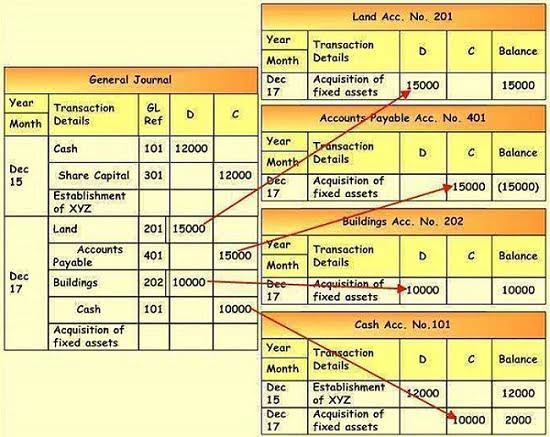Journal entries are usually posted to the ledger as soon as business transactions occur to ensure that the company’s books are always up to date. Finally, you need to post closing entries that transfer balances from your temporary accounts to your permanent accounts. The general ledger is a central database that stores the complete record of your accounts and all transactions recorded in those accounts. You need to identify all transactions that occur throughout the fiscal year. The best approach to do that is to create a system where every transaction is automatically captured because that prevents human error. Typically, companies integrate their accounting software with their payment processor and point-of-sale (POS) software to capture revenue.
Adjusting Entries
Point of sale technology can help to combine steps one and two, but companies must also track their expenses. The choice between accrual and cash accounting will dictate when view your paychecks and w transactions are officially recorded. Keep in mind that accrual accounting requires the matching of revenues with expenses so both must be booked at the time of sale. The accounting cycle is the backbone of financial management and reporting.
Post transactions to the general ledger.
The balance sheet and income statement depict business events over the last accounting cycle. A cash flow statement, while not mandatory, helps project and track your business’s cash flow. Your accounting type and method determine when you identify expenses and income. For accrual accounting, you’ll identify financial transactions when they are incurred. Meanwhile, cash accounting involves looking for transactions whenever cash changes hands. The eight-step accounting cycle starts with recording every company transaction individually and ends with a comprehensive report of the company’s activities for the designated cycle timeframe.
Identifying and solving problems early in the accounting cycle leads to greater efficiency. It is important to set proper procedures for each of the eight steps in the process to current portion of long term debt in balance sheet create checks and balances to catch unwanted errors. The first step in the accounting cycle is to identify your business’s transactions, such as vendor payments, sales, and purchases. It’s helpful to also note some other details to make it easier to categorize transactions.
- Our mission is to equip business owners with the knowledge and confidence to make informed decisions.
- The second step in the cycle is the creation of journal entries for each transaction.
- It breaks down the entire process of a bookkeeper’s responsibilities into eight basic steps.
- Closing entries offset all of the balances in your revenue and expense accounts.
- Closing entries are made and posted to the post closing trial balance.
- A cash flow statement, while not mandatory, helps project and track your business’s cash flow.
Steps in The Accounting Cycle
Accruals make sure that the financial statements you’re preparing now take those future payments and expenses into account. The ledger is a large, numbered list showing all your company’s transactions and how they affect each of your business’s individual accounts. Bookkeeping focuses on recording and organizing financial data, including tasks, such as invoicing, billing, payroll and reconciling transactions. Accounting is the interpretation and presentation of that financial data, including aspects such as tax returns, auditing and analyzing performance.
Streamline your construction business with informed financial strategies. A balance sheet can then be prepared, made up of assets, liabilities, and owner’s equity. Accruals have to do with revenues you weren’t immediately paid for and expenses you didn’t immediately pay. Think of the unpaid bill that you sent to the customer two weeks ago, or the invoice from your supplier you haven’t sent money for. If you use accounting software, this usually means you’ve made a mistake inputting information into the system.
Because it was recorded as accounts payable when the cost originally occurred, it requires an adjustment to remove the charge. Depending on each company’s system, more or less technical automation may be utilized. Typically, bookkeeping will involve some technical support, but a bookkeeper may be required to intervene in the accounting cycle at various points. What’s left at the end of the process is called a post-closing trial balance. You post an entry to the general ledger by adding it to the relevant account.
Most companies seek to analyze their performance on a monthly basis, though some may focus more heavily on quarterly or annual results. To fully understand the accounting cycle, it’s important to have a solid understanding of the basic accounting principles. You need to know about revenue recognition (when a company can record sales revenue), the matching principle (matching expenses to revenues), and the accrual principle.















